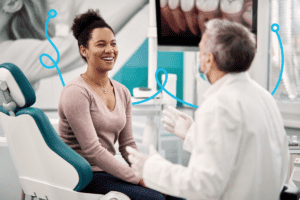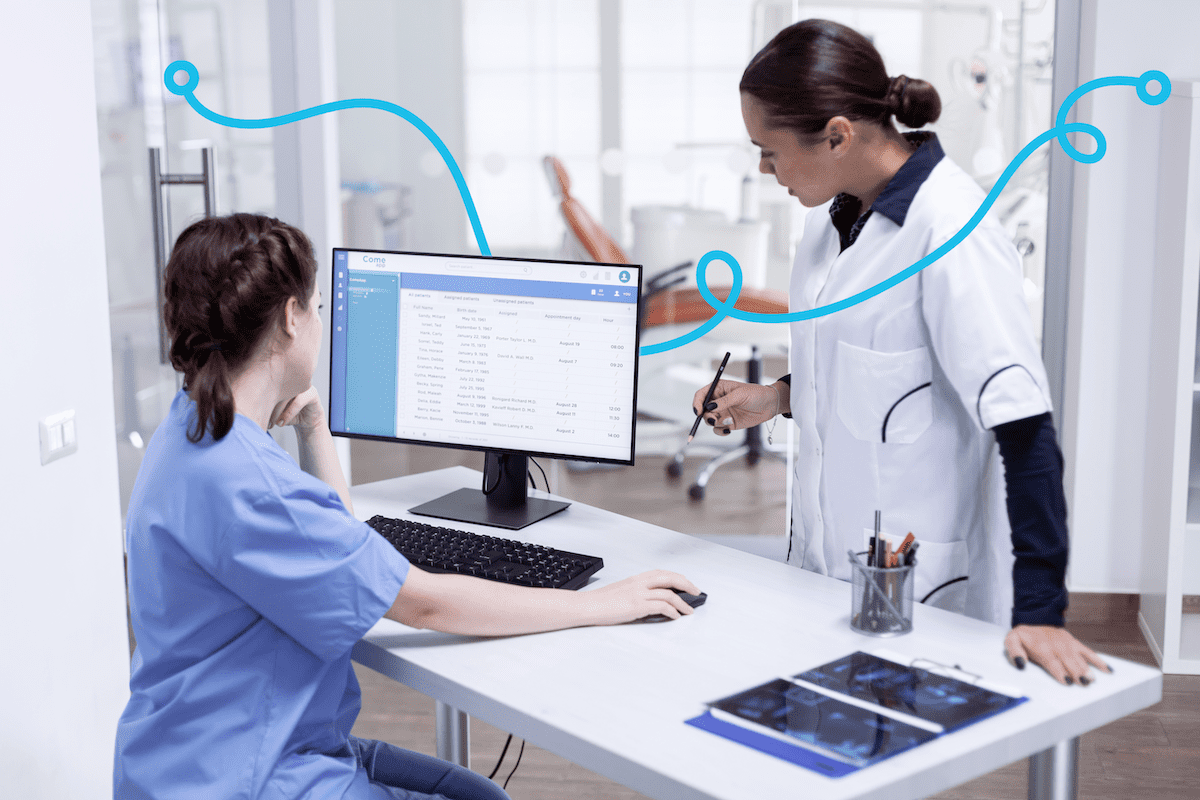The Changing Face of the OMS Practice
There have been many changes for OMS practice management in the last decade. Of course, the last 10 years have been truly incredible for every healthcare field. With every year, more advances in technology, not to mention medical breakthroughs, continue to change the shape of the field. Not to mention, the Covid-19 pandemic changed how we experience healthcare – many things are now remote! Each brand of dentistry has gone through the same shift.
While the changes in technology and medicine might seem like the biggest changes to take note of, that is certainly not all!
Many of the biggest changes in OMS practice management have come from patient expectations. As the world continues to become more and more digital, practice management must adjust around this. We see these changes in marketing, as well in patient communication.
In this blog, we explore how much has changed for the OMS practice in the last 10 years. Let’s dig in!
Technological Advances: Increased Efficiency, Amazing Results

The last decade has been an exciting time for advances in technology for the OMS practice. Ten years ago, many tools, such as the endoscope and laser therapy, had become commonplace. (Endoscopes are so commonplace that a quick Google search will allow you to buy your own for under $100!) A trend towards technological advances will only continue to change OMS practice management.
As with any medical field, these advances mean that your practice is able to deliver better and better oral health care. But perhaps what is most striking about the growth of the last decade is what is being talked about for the future of oral surgery!
For example, as early as 2016, one of the Canadian Dental Association’s Oasis talks offered that growing teeth in the place they were originally extracted from might be a reality in our future. As robotics become more and more sophisticated, we will see many more robotic-assisted surgeries – something that is becoming more and more commonplace. Plus, understanding the genetic codes of many diseases will allow the OMS field to maybe prevent or detect diseases that will eventually require the repair of OMS procedures.
But truly, one of the greatest changes for the OMS practice has been moving into the digital age.
How have we seen this play out?
The OMS Practice in the Age of Digital Marketing
Ten years ago, your patients were probably using Google Reviews to evaluate their dentist. Well, they still are – only more so. As OMS practice management continues to evolve, digital marketing has become increasingly important. Why?
In many ways, patients are not just patients – they are also consumers. Outside of the context of healthcare, most of a patient’s interactions with service providers are carefully cultivated to give them the best experience possible. This is true when they hire a car, or get their nails done, or order groceries online.
Of course, going to the dentist is not the same experience as the services just named. But, that doesn’t mean that expectations for user-friendliness change!
If patients are also consumers, this tells us something about how they will go about choosing an OMS practice. With an OMS practice, the stakes are higher, because the procedures are more complicated – and costly, both for the practice and the patient. The patient knows that they need to make a good choice.
One of the key ways that patients make this decision is through online reviews.
The BrightLocal Consumer Review Survey for 2022 noted that 98% of consumers use online reviews when evaluating a local business. Read that again: 98%.
But what kind of reviews will these consumers be reading? A common fear in OMS practice management is the power of a negative review.
The good news? The same survey notes that 34% of consumers leave positive reviews – compared to the 7% that leave the negative ones. This illustrates how digital marketing can make a huge difference to the OMS practice.
Utilizing social media is also now a key part of keeping your OMS practice relevant. It is necessary for any business to have a social presence that they can leverage through engaging digital marketing strategies.
Patient Communication: Making OMS Practice Management Easy

Going digital is not just limited to marketing. One of the most obvious changes in the last ten years has been the increase in digital communication between the OMS practice and their patients. (This has been particularly true since the unforeseen changes of the Covid-19 pandemic). As is the case with digital marketing, patients as consumers are inevitably part of the fabric of OMS practice management.
But how does this affect patient communication?
As patient expectations have gotten higher, the way in which they interact with health care services has changed. The complex communication of the OMS practice has to be handled carefully in order to meet those expectations.
Ten years ago, it’s likely that your practice was sending pre-appointment and post- appointment instructions home with the patient together, right after their consultation. As many office managers will remember, this resulted in low patient compliance. Patients would lose pre-appointment instructions in advance of the procedure. This can result in canceled surgeries, which in turn results in frustration for both practice and patient. Or, they’d lose the post-appointment instructions by the time procedure took place – making recoveries challenging.
Of course, your practice might still be facing some of these challenges. But, increasingly, the trend is towards digital solutions to tackle intricate OMS communication needs.
Since the Covid-19 pandemic began, both patients and OMS practices alike have placed value on remote dentistry. We have become accustomed to communicating with our dentists remotely, where possible.
Having an automated messaging cadence, sent by text, email, or phone message, has allowed OMS practices to communicate with patients when it’s meaningful to them. For example, you can automate sending post-appointment instructions right after the procedure is concluded – ensuring your patients won’t lose information that’s necessary for their recovery.
Let’s see this in action with Intiveo!
An Example of Digital Communication: Intiveo

At Intiveo, we know something about the nature of digital communication and why it’s so important to the OMS practice. When we created Intiveo OMS, we knew that the product had to reflect complex, intricate communication needs.
Let’s use an extraction as an example. A common mistake made by patients is, even though they fast in terms of food, they will pick up a coffee on their way to the dentist. Support the patient by setting appropriate fasting reminders! By automating a fasting reminder 24-48 hours before their extraction, they are more likely to comply – and their overall patient experience will improve. Your practice is able to send this message by text, email, or by automated phone message, according to your patient’s preference.
By utilizing a digital method of communication, you can see how your practice has the ability to send the right message at the right time.
Plus, your patient receives the message by the method that is most meaningful to them. A younger patient, for example, is less likely to respond to a phone call than to notice a text.
As we say at Intiveo, never have a patient walk through the door drinking a Starbucks ever again!
With patient communication software, we see some remarkable results for OMS practices. Making the switch can offer such results as:
- 75% reduction in unsuccessful appointments due to unprepared patients
- 75% increase in patients confirming their appointments
- 50% increase in patients completing forms
- And more!
Curious to learn more about Intiveo? Book a meeting today!
A Bright Future
In the last 10 years in OMS practice management, we have seen incredible changes in the way that practices serve patients. Providing a unique, personalized patient experience has become a priority for most practices. This can be seen in not only digital marketing strategies, but in the way in which practices communicate with patients. With the ability to communicate with patients by text, email, or phone call according to their preference, practices are able to see patient compliance rising.
Plus, patients become advocates for the practices that serve them well! Patients themselves bring in more patients when practices invest in a digital marketing strategy that includes asking for reviews and maintaining a social media presence.
As technological advances allow the OMS surgeon to do more and more for their patients, a brave new future is unfolding for OMS practice management.
Here’s to the next decade!






